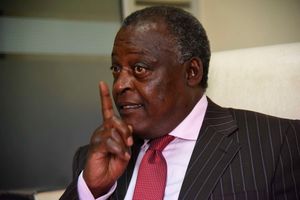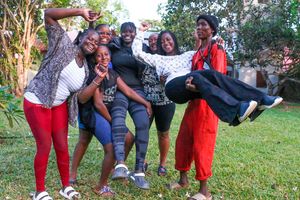Breaking News: Former Lugari MP Cyrus Jirongo dies in a road crash
Premium
Anti-government protests: A tale of two Nairobis

Whereas downtown sides of the city donned a face of normalcy, the Central Business District (CBD) was quieter, with many shops closed characterised by sparse human and car traffic.
It was a tale of two Nairobis on Tuesday morning in the run-up to anti-government protests now in their third week.
Whereas downtown sides of the city donned a face of normalcy, the Central Business District (CBD) was quieter, with many shops closed characterised by sparse human and car traffic.
A spot-check by Nation.Africa showed that some areas in the CBD had heavy police presence against the backdrop of tightly shut metallic doors.
In contrast, market areas such as Muthurwa, a key source of food for the city, were bustling with activity. Sellers were displaying their wares as usual, carts were moving about, and there was little to show apprehension over protests.
Bus stops in outer parts of the city were also busy with some students in uniform reporting back to schools after midterm break.
In the heart of the city, however, movement was constrained. Police around Hilton and Kencom were not allowing crowds to gather, and Nation.Africa observed them stopping people to question them or to frisk their bags.
For those who dared drive into the city, there were no traffic snarl-ups as is the norm. Major highways including Magadi, Lang'ata Road and Waiyaki Way were all clear as few vehicles were operating.
In some parts of the city, anti-riot police could be seen moving around in police vehicles with the majority placed around critical buildings among them Parliament Building, Hilton Hotel and the Kenyatta International Convention Centre.
Use alternative routes
A contingent of security officers continued to block roads leading to State House, forcing motorists to use alternative routes.
Those affected include Dennis Pritt Road, State House Avenue, Processional Way, Valley Road, Jakaya Kikwete Road and adjacent feeder roads with police asking anyone who wants to access to identify themselves.
The protests continue despite President William Ruto conceding to pressure from Kenya's youth and withdrawing the controversial Finance Bill 2024.
At least 39 people have lost their lives in anti-proposed tax demos according to the Kenya National Commission on Human Rights, with another 361 nursing injuries countrywide.
At a media roundtable on Sunday, the President said he was granting more of the demands by the mostly youthful protesters, among them defunding the offices of his spouse, that of his deputy and that of the Prime Cabinet Secretary.
He also indicated a willingness to take a pay cut and to deal with conspicuous consumption among top leaders. The President also promised to assess the performance of his Cabinet.






